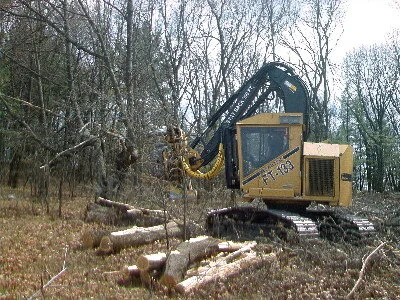Wildlife Needs Timber Harvests!
By Gary Zimmer, Regional Biologist, Ruffed Grouse Society
A statement like the one above would bring condemnation from those totally opposed to harvesting timber from Wisconsin’s vast forested lands. Folks that call for a halt of timber harvest don’t seem to understand that Wisconsin’s forests were historically impacted by disturbances that reset natural succession and ensured an abundance of young forest habitats. Fire, wind, insects, disease and flooding all created habitat for deer, ruffed grouse, woodcock, snowshoe hare and a host of songbirds. These in turn were prey to wolves, bobcats, fisher, goshawks, owls and other raptors.
However, with human presence on the landscape increasing, these natural forces are unable to reset the successional clock. With the exception of windstorms or tornadoes, man stops all disturbances before they get large enough to impact many acres. We now must rely on commercial timber harvests to create and maintain habitat for wildlife in a variety of forest types. The Great Lakes region is the stronghold of the aspen-birch forest type, with 63 percent of the total acreage in the lower 48 states. However, these short-lived forests are declining at a rate of nearly one percent per year and will vanish without continued management. Ash, cherry, fir, jack pine and oak all require high levels of sunlight and do poorly without management that opens the forest canopy and reduces competition. In reality, Wisconsin’s 16 million acres of forestland would be less diverse and supporting a much narrower range of wildlife species if sound forest management practices had not been implemented.
While it is easy to see that timber harvesting benefits species like ruffed grouse and American woodcock, both of which prefer the dense, young forest habitat of regenerating forest stands, forest management benefits so many more species. Forest Service researchers report that more than half of the 187 species of neotropical migratory songbirds that breed in the Midwest use young forest habitats to some degree during the breeding season.
So if you are a hunter, landowner, bird watcher or just one who enjoys Wisconsin’s abundant wildlife populations it is essential that you support and encourage forest management.


